Introduction
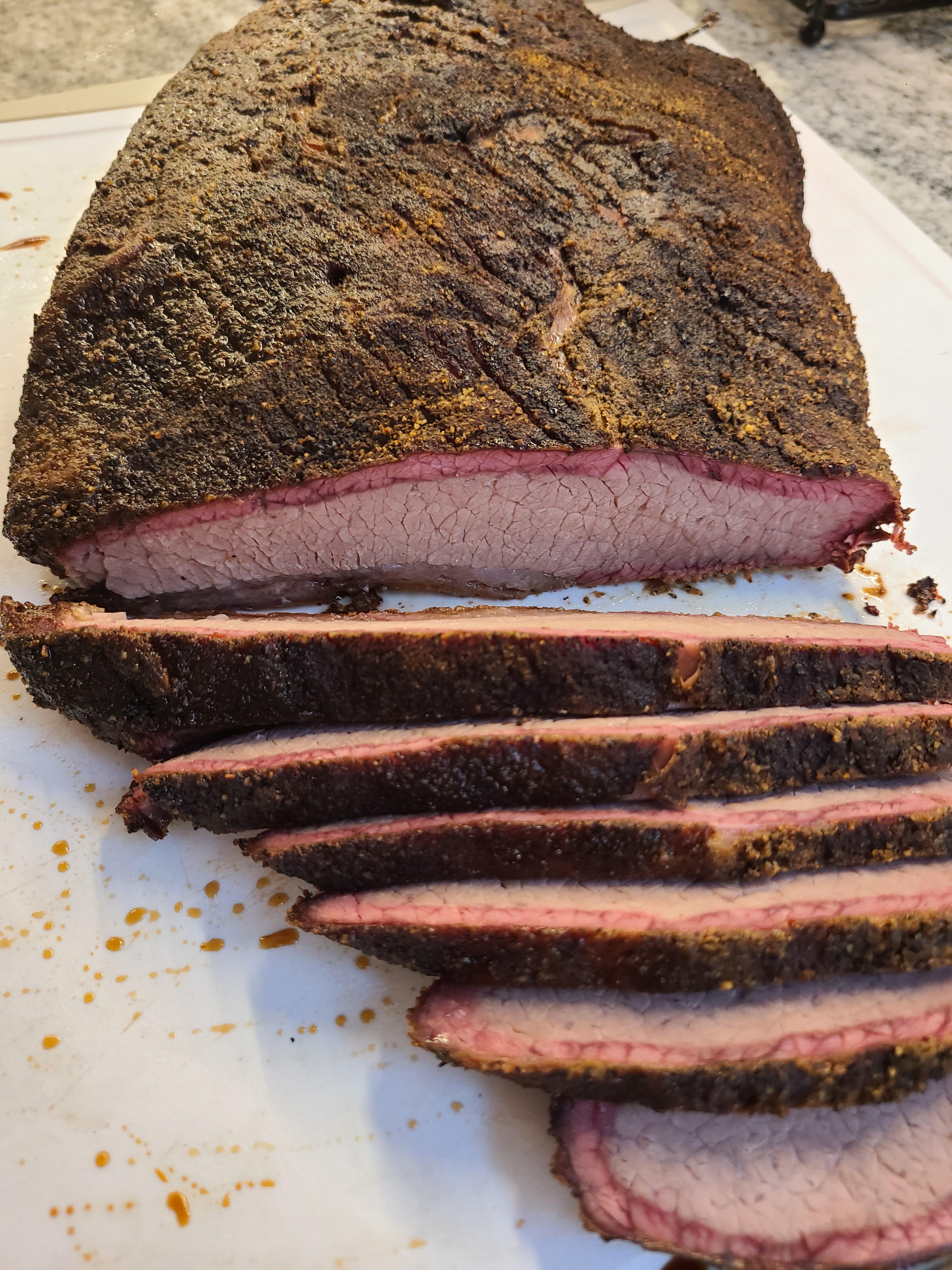
In the world of BBQ, smoking a brisket is considered a true art form. The right temperature can make all the difference in achieving that perfect, melt-in-your-mouth texture and smoky flavor. For many pitmasters and cooking enthusiasts, the decision between smoking brisket at 250 degrees or 225 degrees is a crucial one. In this article, we will explore the benefits and drawbacks of each temperature, compare the flavor and texture outcomes, and discuss factors to consider when choosing the ideal smoking temperature for your brisket. Get ready to elevate your BBQ game with all the knowledge you need to make an informed decision.
Introduction To Smoking Brisket At 250 Vs 225
Smoking a brisket is a revered tradition in the world of BBQ, and choosing the right temperature is crucial for achieving that perfect tenderness and flavor. The decision between smoking brisket at 250 degrees and 225 degrees has sparked ongoing debates among pitmasters and cooking enthusiasts. Both temperatures have their advantages and drawbacks, and understanding their differences is essential for elevating your BBQ game. In this article, we will explore the benefits and drawbacks of smoking brisket at 250 degrees and 225 degrees, compare the flavor and texture outcomes, and discuss factors to consider when choosing the ideal smoking temperature for your brisket.
Smoking Brisket At 250 Degrees
Smoking brisket at 250 degrees offers several benefits. The higher temperature allows for a faster cook time compared to 225 degrees, making it a popular choice among pitmasters who want to serve their delicious brisket sooner. Additionally, smoking at 250 degrees can result in a crispier bark on the outside of the brisket, adding a delightful texture to each bite. However, it’s important to monitor the brisket closely to prevent it from drying out. The higher heat can potentially dry out the meat, so using a water pan or spritzing the brisket with a liquid can help retain moisture.
Benefits And Drawbacks Of Smoking Brisket At 250 Degrees
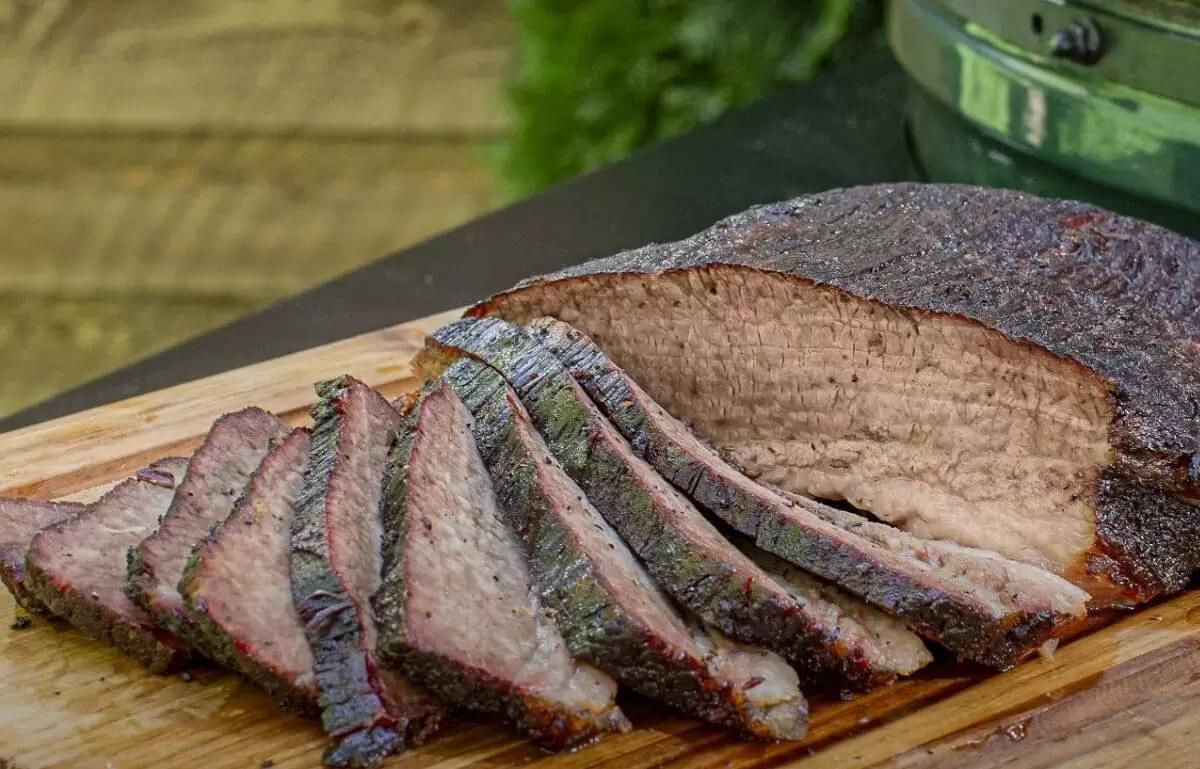
When smoking brisket at 250 degrees, there are several benefits to consider. The higher temperature allows for a faster cooking time, which is ideal for those who want to serve their brisket sooner. It also results in a crispier bark on the outside of the brisket, adding a delightful texture to each bite. However, it is important to monitor the brisket closely to prevent it from drying out. The higher heat can potentially dry out the meat, so using a water pan or regularly spritzing the brisket with a liquid can help retain moisture. Overall, smoking brisket at 250 degrees offers a balance between a faster cook time and a desirable texture, but it requires careful attention to prevent dryness.
Tips For Smoking Brisket At 250 Degrees
- Monitor the brisket closely to prevent it from drying out. Use a meat thermometer to ensure the internal temperature reaches around 200-205 degrees Fahrenheit for optimal tenderness.
- Consider using a water pan or regularly spritzing the brisket with a liquid, such as apple juice or beef broth, to help retain moisture during the smoking process.
- Use a flavorful rub or marinade to enhance the taste of the brisket. Apply it generously and allow it to sit on the meat for at least an hour before smoking.
- Consider wrapping the brisket in butcher paper or aluminum foil once it reaches the desired bark formation to help maintain moisture and tenderness.
- Allow the brisket to rest for at least 30 minutes to an hour after smoking to allow the juices to redistribute and ensure a juicy and tender final result.
Smoking Brisket At 225 Degrees
Smoking brisket at 225 degrees offers its own set of benefits and drawbacks. The slower cooking process allows the flavors to develop more deeply, resulting in a tender and juicy brisket. However, this lower temperature can also prolong the cooking time, requiring more patience from the cook. To maintain moisture, it is important to monitor the brisket closely and potentially use a water pan or regular spritzing. While the lower temperature allows for more flavor absorption, it may result in a softer bark formation. Ultimately, the choice between 250 and 225 degrees depends on personal preference and desired outcome.
Benefits And Drawbacks Of Smoking Brisket At 225 Degrees
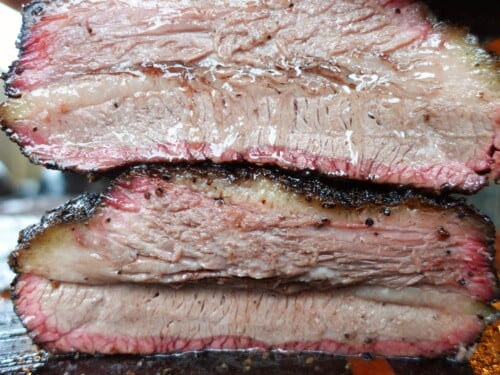
When smoking brisket at 225 degrees, there are both benefits and drawbacks to consider. The lower temperature allows for a slower cooking process, resulting in deep flavor development and a tender, juicy brisket. Additionally, the longer cooking time can allow for more flavor absorption. However, this lower temperature can also prolong the cooking time, requiring more patience from the cook. It may also result in a softer bark formation on the brisket. Ultimately, the choice between 250 and 225 degrees depends on personal preference and desired outcome.
Tips For Smoking Brisket At 225 Degrees
- Use a reliable and accurate thermometer to monitor the internal temperature of the brisket throughout the smoking process.
- Start with a high-quality, well-marbled brisket to ensure tenderness and flavor.
- Trim excess fat from the brisket to prevent flare-ups and uneven cooking.
- Allow the brisket to come to room temperature before placing it in the smoker.
- Use a flavorful dry rub or marinade to enhance the taste of the brisket.
- Maintain a consistent temperature of 225 degrees throughout the cooking process by adjusting vent settings and adding charcoal or wood as needed.
- Consider using a water pan in the smoker to help maintain moisture levels.
- Plan for a longer cooking time, as smoking brisket at 225 degrees will take longer than at higher temperatures.
- Resist the temptation to constantly open the smoker to check on the brisket, as this can cause heat fluctuations and lengthen the cooking time.
- Let the brisket rest for at least 30 minutes before slicing to allow the juices to redistribute and ensure maximum flavor and tenderness.
Flavor And Texture Comparison
When comparing the flavor and texture of brisket smoked at 250 degrees versus 225 degrees, there are subtle differences to consider. Smoking at 250 degrees tends to result in a slightly more intense smoky flavor and a crustier bark on the outside. On the other hand, smoking at 225 degrees often produces a more gentle, mellow smoke flavor and a tender, moist texture throughout the meat. This variation in flavor and texture is primarily due to the longer cooking time and slower heat at 225 degrees, allowing the flavors to develop more deeply. Ultimately, the choice between the two temperatures depends on personal preference and desired outcome.
Comparison Of Flavor And Texture When Smoking Brisket At 250 Vs 225 Degrees
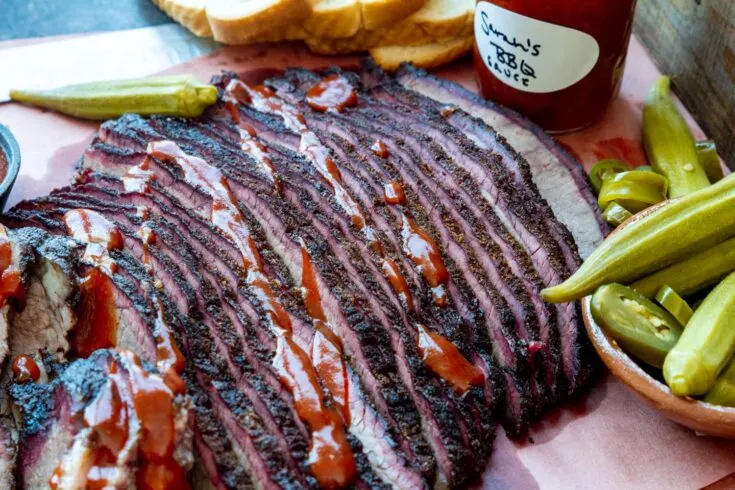
When comparing the flavor and texture of brisket smoked at 250 degrees versus 225 degrees, there are subtle differences to consider. Smoking at 250 degrees tends to result in a slightly more intense smoky flavor and a crustier bark on the outside. On the other hand, smoking at 225 degrees often produces a more gentle, mellow smoke flavor and a tender, moist texture throughout the meat. This variation in flavor and texture is primarily due to the longer cooking time and slower heat at 225 degrees, allowing the flavors to develop more deeply. Ultimately, the choice between the two temperatures depends on personal preference and desired outcome.
Factors Influencing The Outcome
Several factors can influence the outcome when smoking brisket at different temperatures. The first factor is the size and thickness of the brisket. Thicker cuts may require a longer cooking time at a lower temperature to ensure they cook evenly and become tender. Another factor is the type of wood used for smoking. Different types of wood impart different flavors to the meat, so selecting the right wood can impact the overall taste. Additionally, the quality of the brisket itself, including the grade and marbling, can affect the final result. Lastly, the individual smoker’s technique and experience play a role in achieving the desired outcome.
Cooking Time And Moisture Retention
When it comes to cooking time, smoking brisket at 225 degrees typically takes longer than smoking at 250 degrees. This is because the lower temperature slows down the cooking process. Brisket cooked at 225 degrees may take around 1.5 to 2 hours per pound, while brisket cooked at 250 degrees may take around 1 to 1.5 hours per pound.
In terms of moisture retention, smoking brisket at 225 degrees can help the meat retain more moisture. The lower temperature allows for a slower cooking process, allowing the fat in the brisket to slowly render and keep the meat moist. However, with proper techniques such as wrapping the brisket, basting, and using a water pan, it is still possible to achieve a juicy and tender brisket at 250 degrees.
Effects On Cooking Time And Moisture Retention At 250 Vs 225 Degrees

When smoking brisket at 225 degrees, the lower temperature allows for a slower cooking process, which helps to retain more moisture in the meat. The fat in the brisket slowly renders, resulting in a juicy and tender final product. However, this slower cooking process also means that it takes longer for the brisket to reach the desired doneness. On the other hand, smoking brisket at 250 degrees cooks the meat faster but may result in slightly less moisture retention. Proper techniques such as wrapping the brisket, basting, and using a water pan can help maintain moisture at this higher temperature.
How To Ensure A Juicy Brisket
To ensure a juicy brisket, there are a few key steps to follow. First, choose a brisket with adequate marbling, as this fat will help keep the meat moist during cooking. Second, marinate or season the brisket overnight to enhance flavor and retain moisture. Third, while smoking, use a water pan or spray the brisket with a liquid, such as apple juice or beef broth, to add moisture. Finally, after cooking, allow the brisket to rest for at least 30 minutes before slicing to let the juices redistribute throughout the meat. By following these steps, you’ll be well on your way to enjoying a delicious and juicy brisket.
Conclusion
In conclusion, choosing the ideal smoking temperature for brisket ultimately depends on personal preference and the desired outcome. Both 250 and 225 degrees can produce delicious and tender results, but they have slight differences in flavor, texture, and cooking time. It’s important to consider factors such as moisture retention and the use of marination or seasoning to ensure a juicy brisket. Ultimately, experimentation and practice will help you find the perfect temperature that suits your taste and cooking style. So, whether you choose 250 or 225 degrees, enjoy the process and savor the mouthwatering flavors of smoked brisket.
Choosing The Ideal Smoking Temperature For Brisket
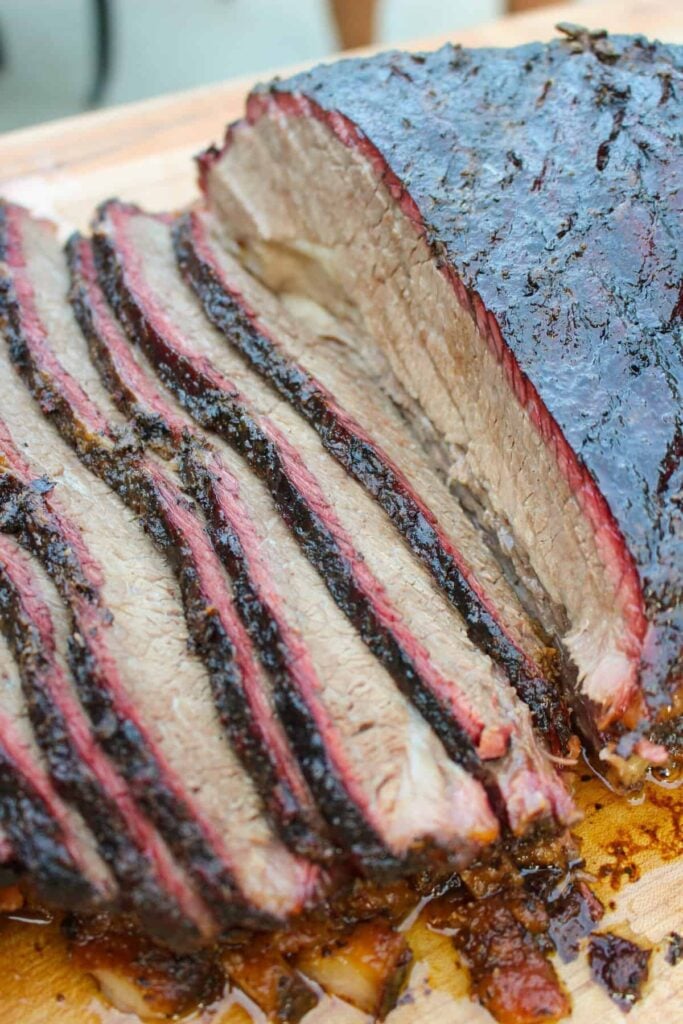
Choosing the ideal smoking temperature for brisket ultimately depends on personal preference and the desired outcome. Both 250 and 225 degrees can produce delicious and tender results, but they have slight differences in flavor, texture, and cooking time. It’s important to consider factors such as moisture retention and the use of marination or seasoning to ensure a juicy brisket. Ultimately, experimentation and practice will help you find the perfect temperature that suits your taste and cooking style. So, whether you choose 250 or 225 degrees, enjoy the process and savor the mouthwatering flavors of smoked brisket.
Factors To Consider When Deciding Between 250 And 225 Degrees
When deciding between smoking brisket at 250 or 225 degrees, there are several factors to consider. Firstly, cooking time plays a crucial role. Smoking at 250 degrees will result in a faster cook time compared to 225 degrees. Additionally, the lower temperature of 225 degrees allows for a longer smoking time, which helps penetrate the meat and develop more robust flavors. Another factor is the desired texture. Smoking at 250 degrees can result in a slightly firmer bark, while 225 degrees can yield a more tender and melt-in-your-mouth texture. Ultimately, personal preference and time availability should guide your decision.
FAQ About Smoking Brisket At 250 Vs 225: Comparing Smoking Temperatures
Q: What is the difference between smoking brisket at 250 and 225 degrees Fahrenheit?
A: The main difference lies in the cooking time and texture of the brisket. Smoking at 250°F will cook the brisket faster and may result in a slightly firmer bark, while smoking at 225°F will take longer but can produce a more tender and melt-in-your-mouth texture.
Q: Which temperature is better for smoking brisket – 250 or 225 degrees Fahrenheit?
A: The ideal smoking temperature for brisket ultimately depends on personal preference. Smoking at 250°F is great for those who want their brisket done sooner with a bit more bite to the bark. On the other hand, smoking at 225°F is preferred by those seeking a more tender and moist brisket that has absorbed more smoke flavor.
Q: How do the smoking temperatures of 250 and 225 degrees Fahrenheit affect the smoke ring formation in brisket?
A: The lower smoking temperature of 225°F often results in a more pronounced smoke ring in the brisket, which is typically desired by barbecue enthusiasts. Smoking at 250°F may still yield a smoke ring, but it could be less prominent compared to smoking at a lower temperature.
Q: Do I need to make any adjustments to cooking times or methods when smoking brisket at 250 vs 225 degrees Fahrenheit?
A: Yes, when smoking brisket at 250°F, you may need to adjust the cooking time slightly shorter than when smoking at 225°F. Additionally, temperature monitoring and using a meat thermometer are crucial to ensure the brisket reaches the desired level of doneness and tenderness regardless of the smoking temperature chosen.
Q: How does the choice of smoking temperature affect the overall flavor profile of the brisket?
A: The smoking temperature can impact the flavor profile of the brisket. Smoking at 225°F allows for a longer exposure to smoke, resulting in a more pronounced smoky flavor. On the other hand, smoking at 250°F may yield a slightly milder smoke flavor but with a quicker cooking time. Experimenting with different smoking temperatures can help you find the perfect balance of smoke and tenderness for your brisket.

Stutts House of Barbecue is a haven for BBQ enthusiasts, offering a delectable array of smoked delicacies, including ribs, beef, bologna, and chicken, accompanied by all the trimmings you could ever dream of. Our passion for perfecting the art of smoking meats shines through in every savoury bite. At Stutts House of Barbecue, we take pride in our custom smoking techniques, ensuring that each piece of meat is infused with the perfect blend of smoky flavours. But it doesn’t stop there – our homemade desserts are the cherry on top of a delicious meal, adding a sweet finish to your BBQ experience.